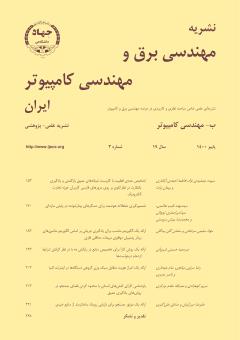طراحی بهینه و زیربهینه فرستنده- گیرنده در شبکههای حسگری متراکم و اینترنت اشیاء
محورهای موضوعی : electrical and computer engineeringفرزاد حسین پناهی 1 , فریدون حسین پناهی 2 , زهرا عسکری زاده اردستانی 3
1 - دانشگاه کردستان
2 - دانشگاه کردستان
3 - دانشگاه کردستان
کلید واژه: شبکههای حسگر بیسیم, اینترنت اشیا, تداخل درون شبکه, ساختار فرستنده- گیرنده,
چکیده مقاله :
امروزه با توسعه بسیار سریع فناوریهای نوین در حوزه اینترنت اشیا و شبکههای هوشمند، مفهوم شبکههای حسگر بیسیم بیش از هر زمان دیگری مورد توجه مراکز تحقیقاتی قرار گرفته است. در سالهای اخیر، پیدایش این شبکهها با ساختار متراکم، بر اهمیت به کارگیری فناوریهای مخابراتی از جمله فناوری فراپهن باند با قابلیت اطمینان بالا، کاربرد صنعتی و همچنین امنیت ارتباطی مناسب افزوده است. اما همچنان نگرانیهای بسیاری در ارتباط با میزان تداخل درون شبکهای به ویژه ناشی از خطوط گسسته طیفی نامطلوب در این فناوری مطرح هستند و بنابراین ارائه یک راهکار بهینه برای حذف تداخل درون شبکه و کنترل طیف توان و سپس تعریف ساختارهای فرستنده- گیرنده مطلوب البته با در نظر گرفتن حساسیتهای بالا نسبت به مسأله سنکرونسازی در شبکههای حسگری بیسیم مبتنی بر تکنولوژی فراپهن باند ضروری است. این اهداف در تحقیق کنونی با اعمال استراتژی بهینه طیفی در مدل سیگنال، ساختار حسگر فرستنده و سپس ترسیم ساختارهای حسگر گیرنده بهینه و یا زیربهینه دنبال میشوند که نتایج به دست آمده بیانگر بهبود عملکرد ارتباطات در شبکههای حسگر بیسیم است.
With the rapid development of new technologies in the field of internet of things (IoT) and intelligent networks, researchers are more interested than ever in the concept of wireless sensor networks (WSNs). The emergence of these densely structured networks in recent years has raised the importance of the use of telecommunications technologies, such as ultra-wideband (UWB) technology with high reliability, industrial applications, and appropriate communication security. However, there are still numerous concerns about the extent of inter-network interference, particularly owing to undesired spectral discrete lines in this technology. As a result, it is necessary to provide an optimal solution to eliminate interference and control the power spectrum, and then design the optimal transmitter-receiver structures while considering high sensitivities to the synchronization problem in WSNs based on UWB technology. These goals are pursued in the present study by employing the optimal spectral strategy in the signal model, the structure of the transmitter sensor, and then constructing the optimal or sub-optimal receiver sensor structures, the results of which indicate improved communication performance in WSNs.
